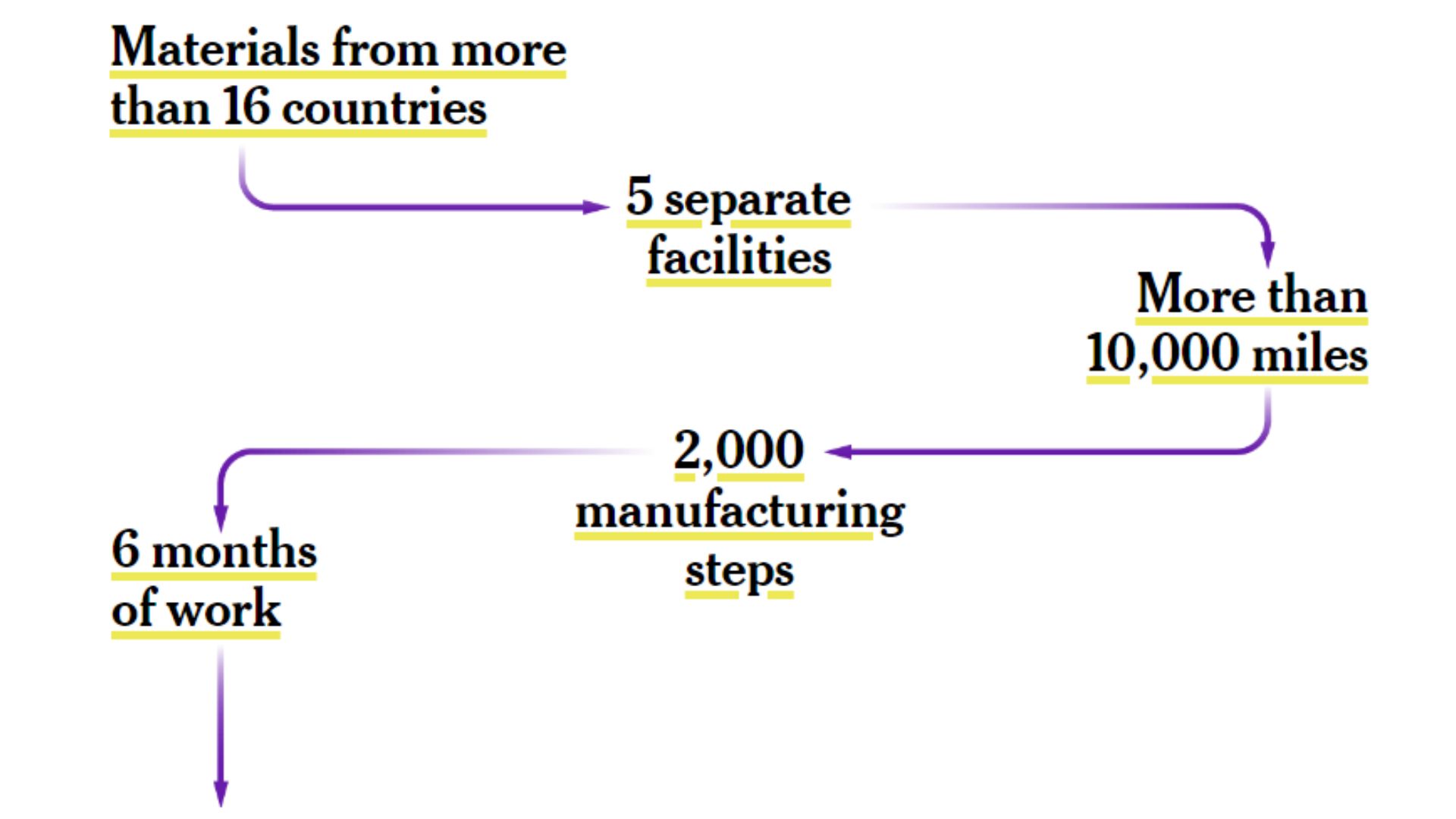
Semiconductors are vital to the modern economy, powering everything from video games and cars to supercomputers and weapons systems. The Biden administration is investing $39 billion to help companies build more factories in the United States to bring more of this supply chain back home.
But even after U.S. facilities are built, chip manufacturing will remain decidedly global.
The international journey of one kind of chip, made by the American semiconductor manufacturer Onsemi and used to power electric vehicles, demonstrates how difficult it will be to decouple from East Asia and other regions that dominate the chip market.
The first steps for making this particular semiconductor, known as a silicon carbide chip, happen in a factory in New Hampshire. The chip ends up in cars driven on American roads and elsewhere. But in between, the process will depend on raw materials, machinery and intellectual property from dozens of foreign suppliers and factories.
The first computer chips were invented in the United States, but by the late 1960s parts of the supply chain began to move overseas as companies looked to save costs. With the help of generous subsidies, Asian companies eventually began to manufacture chips that were cheaper and more advanced than those made in the West.
America’s share of world chip manufacturing has fallen to just 12 percent today from 37 percent in 1990, according to industry figures.
The United States is trying to win back more chip production to make its supply chains more resilient, and avoid the kind of expensive and economically damaging shortages of semiconductors seen during the pandemic. But with other countries also continuing to spend heavily on their chip industries, American investments — as big as they are — will go only so far to change the global picture.
One 2020 study by the Boston Consulting Group and the Semiconductor Industry Association estimated that an infusion of $50 billion would increase the American share of manufacturing to 13 or 14 percent by 2030, helping the United States to hold on to at least a portion of the global market. Without the funding, the U.S. share would fall to 10 percent, the study said.
For the most cutting-edge chips, including those that are helping to power a boom in artificial intelligence, U.S. officials now say that new investments will put the country on track to produce roughly 20 percent of the world’s leading-edge logic chips by the end of the decade.
Fuente de nota e imagen: https://www.nytimes.com/interactive/2024/03/20/business/economy/semiconductor-chip-manufacturing-us.html

